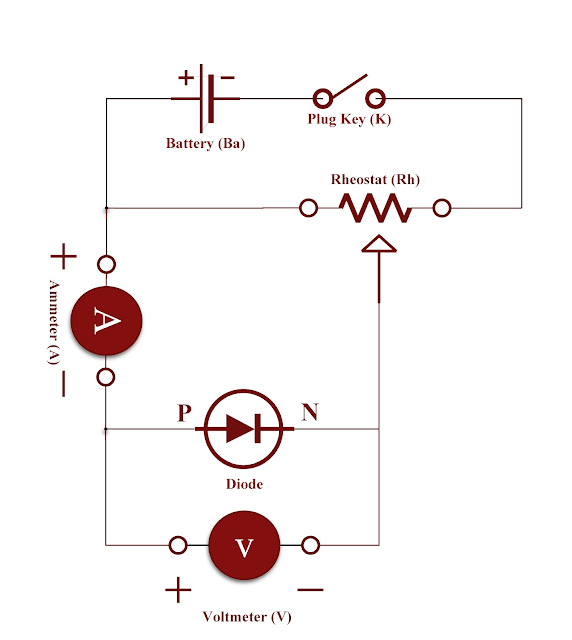Trending Bit
Translate
- Get link
- X
- Other Apps
To determine the resistance per unit length of a given wire by plotting a graph for Current (I) versus Potential difference (V)
RESISTANCE PER UNIT LENGTH OF A WIRE
This experiment will determine the resistance per unit length of a given wire by plotting a graph for Current (I) versus Potential difference (V). Resistance is a restriction of the flow of current in an electrical circuit measured in terms of Ohms (Ω).
Aim of the experiment :
To determine the resistance per unit length of a given wire by plotting a graph of Current versus Potential Difference.
Apparatus required :
- Connecting wire
- Voltmeter
- Ammeter
- Battery
- Rheostat
- Plug keys
- Connecting wires
Principle of the experiment :
Ohm’s Law: " The electric current flowing through a conductor is directly proportional to the potential difference across the ends of the conductor when temperature and physical conditions remain constant "
Hence, Potential difference (V) is proportional to Current (I) or V = RI
Formula :
02. Resistance per unit length (in Ωm-1) = R/L
Circuit diagram :
The circuit diagram for the resistance per unit length of a given wire by plotting a graph for Current (I) versus Potential difference (V)
.jpg) |
| Resistance per unit length of a given wire |
Nature of Graph :
.jpg) |
| Graph for Current (I) Vs Potential difference (V) |
Procedure :
- Connections are made as shown in the circuit diagram using connecting wires and the given apparatus.
- A particular value of current (I) is adjusted using a rheostat. The corresponding value of voltage V is noted down.
- The experiment is repeated for different values of I and V & readings are tabulated.
- A graph is plotted between V & I. By considering V on the X-axis and I on Y-axis. The slope "m" of the graph is found.
- Reciprocal of the slope is calculated which gives the resistance R of the wire
- length of the wire is measured.
- The resistance per unit length of the wire is calculated using the given formula.
Observation :
Length of the wire, L = ..................... m
Tabular column :
Note down the observed values in the respective tabular column below.
| Trial Number | Current I (in Ampere) | Voltage V (in Volts) |
|---|---|---|
| 1 | ||
| 2 | ||
| 3 | ||
| 4 | ||
| 5 | ||
| 6 | ||
| 7 | ||
| 8 | ||
| 9 | ||
| 10 |
Calculation :
01. Resistance (in ohm) of the wire R = 1/m = CB/AB = ...................Ω
02. Resistance per unit length (in Ωm-1) = R/L = ...................Ωm-1
Result :
Resistance per unit length of given wire is given by = ...................Ωm-1
Note :
The Plug key (K) should be inserted only while taking the respective observations. In order to avoid the unnecessary heating of the wire.
BITS ARROW
Popular Posts
To draw the I - V characteristic curve for P - N junction diode in reverse bias and to determine the saturation current and breakdown voltage
- Get link
- X
- Other Apps
How to update student detail in SATS portal (Student Achievement Tracking System)
- Get link
- X
- Other Apps
To draw the I - V characteristic curve for P - N junction diode in forward bias and to determine the cut in voltage
- Get link
- X
- Other Apps
How to change the capitalization or cases of selected texts in Microsoft word
- Get link
- X
- Other Apps
List of complete Physics practical experiments for 2nd PU students
- Get link
- X
- Other Apps





Comments
Post a Comment